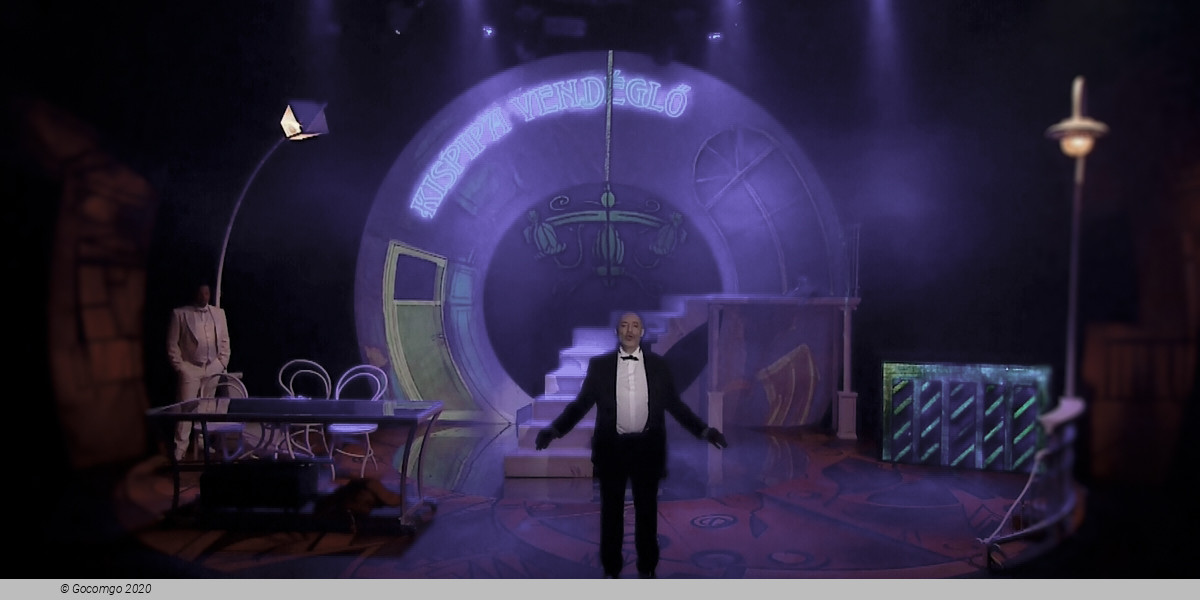Madách Theater (Budapest, Hungary)
Madách Theater

In the autumn of 1908, the dailies reported the following event: a new Royal Orpheum was built in the heart of the capital, Erzsébet krt. No. 31 and in the area of the large block of buildings on Hársfa Street related to it. The construction was based on the plans of the architect Bertalan Gaál, commissioned by Hermann Keleti and Oszkár Fodor. The opening took place on October 1st. The Royal Orpheum boasted state-of-the-art theater equipment at the time, its auditorium provided entertainment for 789 people, and a conservatory enriched the elegant milieu. Over the decades, the Royal Orpheum has but world stars also performed on stage, so that the audience could celebrate Josephine Baker, for example.
In 1933, the Royal Revue Theater became the name of the institution, and in the same year, reconstruction work was carried out on the building under the leadership of Miklós Gyarmathy. By 1945, the name of the theater had been changed several times, but the point had not changed: famous artists, creators, a popular show, and great successes. In 1951, the variety was christened the Budapest Comedy Theater, which by then had mainly major operettas and musical comedies. Two years later, however, a decision was made to demolish the once-shining building as it no longer met the requirements of the age. In their place, they dreamed of a new theater building.
The construction took eight years according to the plans of Oszkár Kaufmann. The most famous works of the architect, who works mainly in Germany, include the Hebbel Theater in Berlin, the Volksbühne, and the Habima Theater in Tel Aviv. Oszkár Kaufmann lived in Budapest after the Second World War, when he made the plans for the Madách Theater, the construction of which he could no longer see. The construction was completed according to the additional plans of engineers Pál Mináry and Ottó Fábry.
The four-storey building was again equipped with the most modern technology and the most modern conditions. Spectators were welcomed by spacious spaces, elegant interiors - Ruskica and Chinese marble, Venetian mosaics, Bulgarian turtleneck inlays, walnut cladding and velvet armchairs, as well as an air - conditioned auditorium for 903 people. Part of the 19-foot-wide stage was the revolving stage, four 12-meter-deep sinks, and a four-story-high cord floor. The façade of the building was covered with 30 mm thick rock slabs of different sizes, its characteristic image was given by the group of sculptures of György Kerényi, József Somogyi and József Kovács.
The new boulevard building could be occupied by the company of the Madách Theater. During the history of the company, which began in 1919, he played in the theaters of the Academy of Music for a year, then many years later, from 1940, he took over the building at 6 Madách Square, and finally in 1951, circumstances. The company was able to move into its final home in the spring of 1961. The opening performance on March 24 was a drama by Brecht entitled Caucasian Chalk Circle, directed by Otto Ádám, starring Irén Psota, Sándor Pécsi, Miklós Gábor and Hédi Váradi.
Oszkár Kaufmann's theater building was one of the greatest playgrounds for many decades, but it no longer met the stage technical, technical and artistic requirements of the time in the 1990s, so the Madách Theater building underwent a complete renovation in 1998-99 under the artistic direction of Imre Kerényi.
Since the reconstruction, the Madách Theater has been performing at three venues: the Grand Stage, the Studio Stage and the Tolnay Salon.
The Grand Stage has state-of-the-art technical equipment to meet all needs. Its air-conditioned auditorium - on the ground floor, balcony and first floor - can seat a total of 804 people. Its public spaces, which, with their Carpathian Basin, Dalmatian and northern Italian patterns, evoke a slightly Mediterranean atmosphere, are spacious and comfortable. The walls are covered with an artistic decorative painting based on the designs of the set designer Balázs Horesnyi. The ceiling of the auditorium is decorated with a fresco dreamed up by set designer Béla Götz, in which the masked figures of the commedia dell’arte fly through the cloudy sky towards and above a dream theater.


